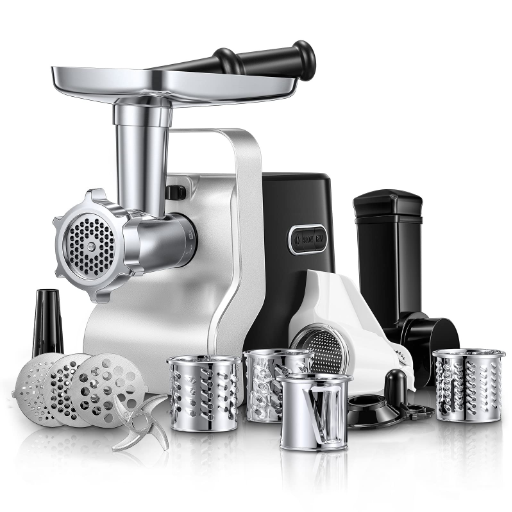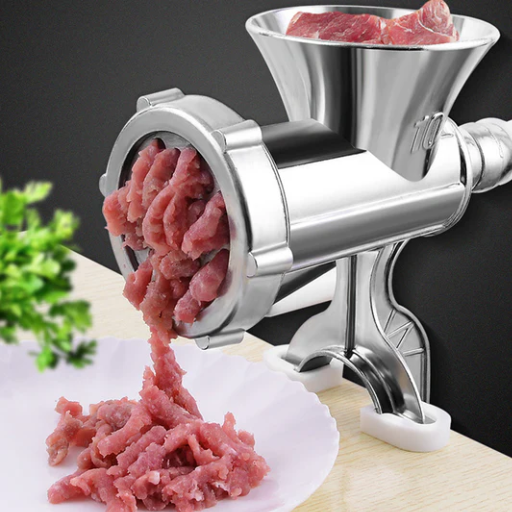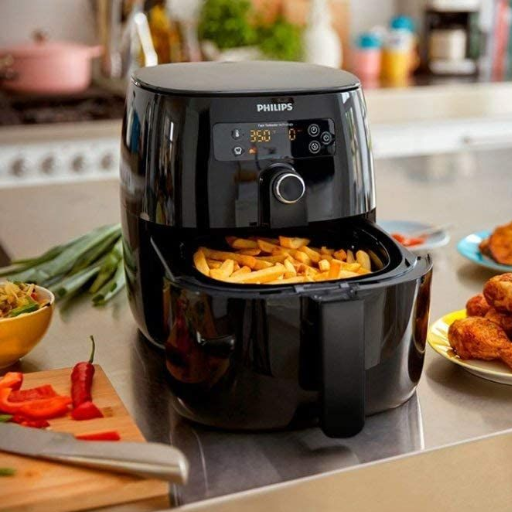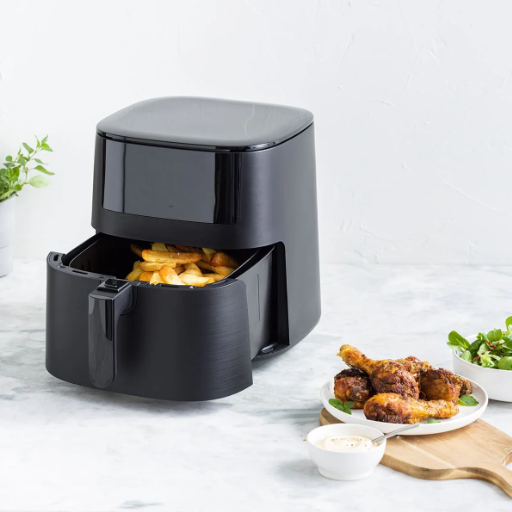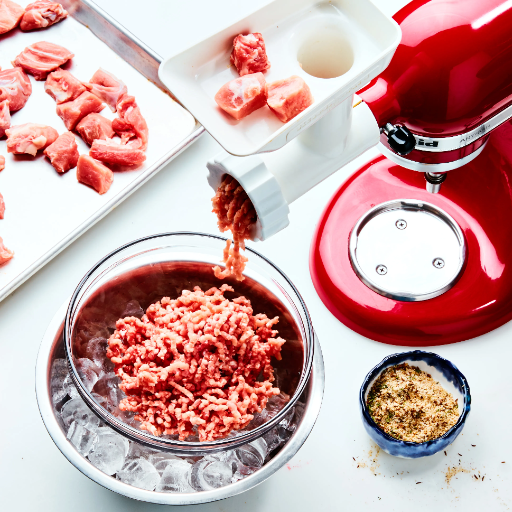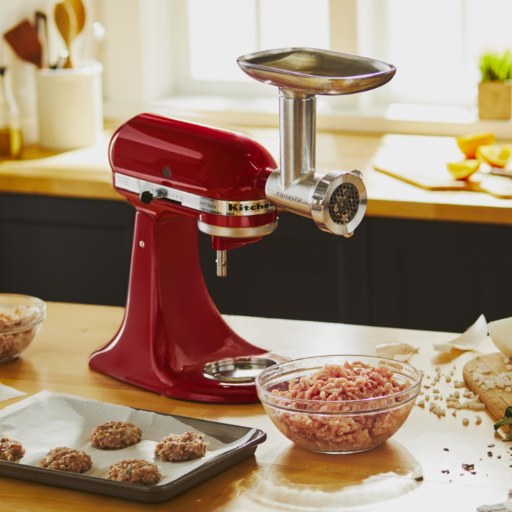As a result of its features, it has become incredibly popular among people who enjoy activities outside as it can be used for camping, cooking, and even hiking. Over the years, butane gas stoves have evolved in a very considerable manner which is why this guide is aimed at helping you understand these multifunctioning stoves and what makes them special so you can make a decision as to which stove suits your requirements the best.
In this article, we will learn about the top features and benefits of portable butane stoves, their limitations, as well as give you some tips and advice for their safe use. In addition, you will find model comparisons, maintenance tips, and advice on how to conserve fuel. This guide has been designed with the sole purpose of providing valuable insights into technical knowledge regarding camp cooking to help seasoned campers and beginners to further enhance their camp cooking experience.
What are Portable Gas Stoves and How Do They Work?

Designed for outdoor and mobile cooking, portable gas stoves are small in size and use butane or propane as fuel. These stoves function by utilizing a gas canister. A fuel regulator increases gas pressure, which is forced into a burner where air is added and ignited to create a controllable flame suitable for cooking. These stoves also include a lightweight fuel canister, which is portable and easy to carry. The stoves are also equipped with adjustable flame controls which provide for precise heat regulation. These technologies and their compact nature makes portable gas stoves a necessity while camping, backpacking or even for use in emergency situations.
Understanding Portable Butane Gas Stove Basics
Portable Butane gas stoves have been designed to enhance user experience by adding features that improve performance. Such an enhancement is an integrated ignition system that is often piezoelectric, which removes the necessity of outside lighters or matches. The burners are engineered to have high thermal efficiency meaning fuel is conserved and overall cooking time is reduced. In addition to user convenience, most stoves come with mechanisms for added safety. Such mechanisms include pressure-sensitive cut-off valves, which protect against over-pressurization of the canister.
The mobility of the stoves is one of its distinct advantages since most units are designed to include carrying cases. Fuel canisters are often made to be interchangeable, so replacements are easy to procure. “These stoves are very useful on different settings and places because they can tolerate different altitudes and weather conditions and the heat they put out is great,” said Robert Hood. There is little maintenance required for portable stoves, aside from having to clean them from time to time and checking if they are functioning.
Butane stoves however, unlike other portable stove types, excel in ease of use, reliable flame control, and ease of use making them favored in camping and emergency situations.
How BTU Ratings Impact Cooking Performance
Cooking performance is significantly affected by the BTU (British Thermal Unit) rating that indicates “how much heat” a stove can produce. Cooking is, with any other task, done with efficiencies in mind. Accordingly BTU ratings tend to elevate the speed cooking activities through the listing of their propane stove. While higher ratings do lead to lower boiling times of water, cooking the stove gets in cold, or high spotting places like waiting and high altitude places; too high BTUs may also lead to roughened windows. Loose but controlled heat for simmering, water at delicate tasks is required. 8,000 to 12,000 is universal optimum fuel efficacy and versatile cooking requires yielding performance control.
Types of Ignition Systems: Piezo Ignition vs. Manual
Piezo ignition apparatus access the internal system that produces a spark through a piezoelectric crystal compression. There is no need for fire sources such as matches or lighters. This system is self-sufficient especially in damp and windy weather conditions and does not require regular servicing. On the downside, piezo ignitions can sometimes fail due to extremely cold temperatures or after prolonged use, meaning alternate ignition types are essential.
In contrast, with manual systems, the user is responsible for igniting the fuel using a lighter or match. Although it is less efficient than piezo systems, manual ignition has higher reliability over time as it does not have delicate parts that can easily fail in harsh conditions. The two systems serve different user needs and preferences, and the selection is highly dependent on the situation and intended frequency of use.
How to Choose the Best Portable Gas Stove for Camping?

Look out for the following features when choosing the best fit portable gas stove for camping:
- Fuel Supply and Type: Check if the stove uses propane, butane or another fuel source. Make sure the fuel is available and suitable for your camping site.
- Burner Output: Make sure to evaluate the heating output (measured in BTUs) for your stove to fit your cooking requirements. Higher BTU’s burns faster but lower BTU’s is more fuel efficient.
- Weight and Size – Especially for backpackers, size and weight of the stove is equally important, so try to find a balance between the two.
- Type of ignition system – For extreme circumstances, manual systems are more reliable. Otherwise, piezoelectric systems work just fine.
- Number of Burners: Look out for how many parts of your stove needs burners. Single burners take up less space while multiple burners make room for more meal prep.
- Stability and Wind Resistance: Look for construction of windshields as well as sturdy stove body so that the burner could perform steadily within outdoor settings.
- Ease of Maintenance: Choose a stove that is easier to set up and clean and will need less hassle in the long run.
Taking these points into consideration will help you choose the portable gas stove that best suits your camping needs and improves your outdoor cooking experience.
Portable Burner Size and Cooking Capacity
When looking at the size of a portable burner, it is important to consider the size and area in relation to your pots and pans. Space saving needs to be checked for with compact stoves, if they can hold the pots and pans which are not top heavy. From the stoves ability to cook, check the BTU (British Thermal Units) because it dictates the efficiency of the heating. Easy to use single burners work well for power needs when cooking for one of a few people, while multi-burner larger stoves are preferred for multiple meals at the same time. Having both size and capacity works best for all your needs during outdoor activities.
Safety Features to Look for When Buying
When choosing a stove, pay special attention to its safety measures designed for outdoor usage. Pick a stove that has controllable flames and overheating prevention features, like valves that adjust heat levels. Operational safety is improved by systems that turn off the stove automatically when oxygen levels drop too low or the flame has gone out, so check for those. Stability is also very important—choose stoves with slip-resistant legs or windscreen attachments so the stove doesn’t tip in rough or breezy conditions. Check that the stove also has secure gas fittings, like a hose or a locking mechanism, so there is no leakage, fire, or explosion risk. All of these aid in enhancing an outdoor cooking experience.
What Can You Cook on a Portable Butane Stove?

Butane burners have increased portability, they are easy to carry with you when going outdoors or when emergency preparedness is required. Boiling water for coffee or tea, frying eggs along with red bell pepper steaming, and meats grilling and stews simmering are all things they can accomplish. Proper cookware will also allow the preparation of pasta, rice dishes, and pancakes. Enhanced precision alongside holds high and low cook techniques brings noted versatility at the aid of adjustable temperature control.
Outdoor Cooking Tips and Techniques
- Prepare properly: Ensure portable stoves and grills serve your purpose. Make sure to get the correct fuel type intended for use with the stove or grill, compatible fuel type should be available. Butane will work best for stoves. Stoves and grills which use charcoal or propane serve better for grilling.
- Use the right Burners: Use best possible materials for construction, the ones which are light in weight and can conduct heat effortlessly, iron and stainless steel being examples. Make sure that the cookware is meant for the outdoors and has the ability it distribute heat evenly.
- Placement: Stations outdoors need to be prepped beforehand, it is best to undertake the responsibility of cutting and seasoning food at best. Pack sealing containers and cut down on outdoor waste.
- Steady Heat Control: Control the heat on a portable stove or grill by keeping an eye on direct and indirect zones. Without proper control over heat unevenly cooked meals along burning food are bound to happen.
- Extra Precautions: A smoke signal should ring along with a grill going off. The stove should have water beside it, of the extinguishing type. Fuel levels should be checked and devices used for cooking should be secure to prevent spilling.
- Clean as You Go. Biodegradable cleaner, along with correct disposal of food waste, aids in minimizing the negative impact on the environment. Clean cookware immediately after use to save time and work consistent with the dishwashing heuristic.
These suggestions help improve the enjoyment level of your outdoor cooking while being safe, effective, and environmentally friendly.
Using Portable Stoves with Different Cookware (Woks, Pots)
When using portable stoves with different types of cookware, the dishes compatibility with the heat regions needs to be taken into account. For woks, a stove with a high-capacity burner and a concave support ring for adequate wok stability is best to ensure even cooking. Flat-bottom woks are also quite adaptable to stoves with flat-top burners. Pots on the other hand, require a rigid and horizontal work surface with hot plates that have even heating to prevent uneven temperatures. Make sure that the stove allows for different heat levels to be set according to the different needs of the cookware used and cooking techniques employed.
Woven and nonwoven materials may also vary in their compatibility to being processed. For rapid, simple boil meals or simple procedures, lightweight aluminum or titanium foils are best. However, for frying and stews where retaining heat is a plus, cast iron works best. Control/adjustable range pans should be used with care in outdoor settings to reduce the possibility of tilting accidents. Thoughtful consideration of these factors ensures safety, cooking efficiency, and optimal meal preparation.
Fuel Efficiency and Cooking Times
Various factors, such as stove type, weather, fuel, and the design and materials of the cookware can all influence fuel efficiency. Fuel is maximized with stoves with good protection against wind and heat control features. It is important to always use a windscreen. Minimizing heat loss through wind helps reduce fuel used substantially. The amount of fuel used can be reduced greatly through proper sizing of the cookware to the burners. The complexity of the meal alters required cooking time. In higher altitudes, boiling takes longer because the pressure is lower. For best results, meals that are heavily simmered should be avoided and a lid should be used to trap heat.
Where to Buy Quality Portable Gas Stoves?
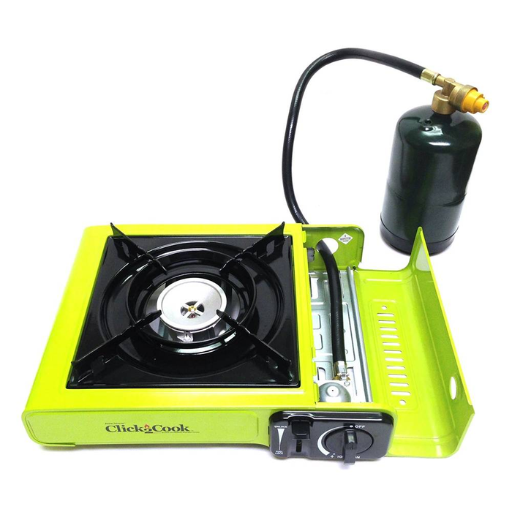
There is a plethora of outdoor camping and sporting goods chains to purchase from, including REI and Bass Pro Shops in addition to Amazon and Walmart, who dedicate entire sections to gas stove camping equipment. Specialized manufacturers such as Jetboil, MSR, and Coleman market their products directly through their websites, which offer precise descriptions, warranty data, and sponsoring claims, all while providing protection agreements. This information allows customers to make well-informed choices. Americans should be cautious of sellers who do not have listed protection services, as quality assurance services may not be provided post-sale.
Price Comparison Between Top Portable Stove Models
The best options differ across dealers due to their set cooking performance and their fuel efficiency during operation, which determines the price range. Strategically placed burners and efficient construction along with a strong brand tend to otherwise lower market prices. Many outdoor enthusiasts recommend the Coleman Classic Propane Stove for its two-burner feature and, in turn, low price of about $50-$70. If prioritization is placed on size and weight, the MSR PocketRocket 2 is a great option, ranging from $45-$60 dollars. More expensive models include the Jetboil Flash Cooking System at a price of $110-$150, designed specifically for integrating boiling functions. For maximum value, it is suggested to control your requirements.
Customer Feedback and Product Ratings
Performance, durability, ease of operability, and ease of fuel consumption are noted as value points across all models of portable gas stoves. From an analysis of customer feedback on popular review sites, the following points have been summarized:
- The Coleman Classic Propane Stove has been receiving unending positive evaluation based on reliability and value where users score the stove between 4.4-4.6 out of 5 stars. Users value the simple workings and sturdy build of the stove, although it has been noted that wind protection could be better.
- MSR PocketRocket 2 is reputed to receiving high scores for portability and efficiency, often attaining 4.7+ out of 5. It is frequently praised by backpackers for its lightweight’s convenience along with rapid boiling but does require mild weather conditions to perform best.
- Jetboil Flash Cooking System has been cited by users for numerous 4.8 out of 5 ratings with customers admitting to its quick use and lift-up design. Users do note its higher price and limited cooking capacity as minor setback for some.
Do keep in mind that these rating are generated based on evergrowing demand for stoves based on cost, portability, or extreme conditions, so focusing on specific themes repeated in reviews should be vital.
How to Use a Portable Butane Gas Stove Safely?

To use a portable butane gas stove safely, keep the following in mind:
- Choose a safe Ventilation: Operate the stove in an area that is well-ventilated, free from any combustible substances, and has a level stable non, non-porous surface. It is advisable not to use it in a confined space unless a special ventilation system is used.
- Check the stove and the gas canister: Make sure there are no leaks and the stove is not damaged prior to use. Confirm that the can of butane gas is well secured and locked tightly in the compartment designed to hold it.
- Light the burner carefully: Carefully attach the cartridge following the instructions provided. Start to unlock the gas control knob while lighting up the burner either with a match or an igniter. Hold your face and hands in a safe distance.
- Safely monitor the frame: Keep a check on the frame of fire and monitor that it is no to high or dangerous. Under no circumstances should you leave the stove unattended.
- Apply flameless techniques while shutting it off: When shutting it off, ensure to turn the gas knob to off which will extinguish the flames. Make sure to wait for the stove to cool down before taking off the butane canister.
Getting additional safety procedures from the manufacturer’s guide will assist in having a better experience.
Gas Burner Maintenance Tips
1. Routine Cleaning: Routinely wipe down burners and adjacent parts after use in order to avoid the accumulation of residue and grease. Use a damp cloth and non-scratch soap to clean the surface of the burners. Smooth out any blockages within the gas ports with a soft-bristled brush, and a needle if required.
2. Look for Wear and Tear: Continually monitor the burner heads and their fittings to check for damage, wear, corrosion, or other issues. Take immediate action to change worn parts without delay to maintain effectiveness and safety.
3. Good Practices of Storing: Keep the propane torch in an adequately ventilated, moisture-free area when not in use. To ensure the safety of the burner, butane canister, and other parts, remove them from direct sunlight and guarded away from high heat.
4. Examine Gas Connections: Verify that gas connections are snug and leak-proof. To prove this, use a soapy water solution and apply it on the connection points. If bubbles form, then there is a gas leak. If you suspect a gas leak, do not light the stove.
5. Maintenance Schedule: Do not neglect the manufacturer provided maintenance schedule which takes into account deep cleaning and professional inspection where applicable. This guarantees dependability and durability for your gas burner in the long term.
Following the aforementioned practices will help maintain the proper functioning of your gas burner while keeping it safe for use. It will also increase the durability of the equipment in question. Ensure to always follow the maintenance protocol outlined in the user manual provided by the manufacturer’s guidelines.
Are Portable Gas Stoves Worth the Investment?

Portable gas stoves are a handy piece of equipment for those with specific needs. For people who travel, campers, or anyone that enjoys being outdoors, these stoves function as reliable cooking appliances in places lacking a kitchen. These devices are also helpful in cases of emergency owing to their small size. In addition, modern portable gas stoves are built with safety measures and fuel efficiency in mind. However, for those reserved users of the stove, or people with less storage space, thinking about the price for the value of use is paramount. All in all, the answer resides on the users’ lifestyle and needs.
Comparing Portable Stoves to Electric Alternatives
A number of important factors are considered when choosing between portable gas stoves and electric stoves. As with any outdoor activity, a portable gas stove works well in many scenarios because of its independent nature from power sources, granting it real estate portability. It is also for the advantage of providing gas stoves that they instantly heat with the added benefit of having supreme fire control for exacting cooking. Electric versions, however, have the advantage of being more powerful in confined spaces and to some extent safer indoors because of the absence of flames and gas fumes. Also, they are less heavy and require more maintenance than gas ones, but their reliance on electricity makes them nonportable. In the end, it is determined what the user’s primary intention is as far as practicality and energy capability constraints or environmental impact concerns.
Convenience Factor for Regular Use
In terms of convenience for regular use, gas stoves are superb for individuals who are very mobile. Outdoor enthusiasts and those who partake in other activities that demand being away from electricity would find gas stoves invaluable in case of power outages and other emergencies. On the other hand, gas stoves do incur some operational challenges in regards to the perpetual purchase and careful storage of fuel canisters. Electric stoves, on the contrary, are incredibly convenient in areas with stable power supply. They plug right in and turn on, making use incredibly effortless. While gas stoves incur higher maintenance costs and the need to purchase fuel, electric options do require maintenance and are prone to damage without any fuel source. This means, however, that there is less flexibility in off-grid scenarios. In comparison, most gas stoves are easier to handle for indoor upkeep. For outdoor use, the situation is almost reversed, with gas stoves outperforming.
References
Frequently Asked Questions (FAQ)
Q: What is a portable butane gas stove?
A: A portable butane gas stove is a compact cooking device that utilizes butane fuel for heating. It’s ideal for outdoor activities like camping and offers a convenient way to cook meals away from home.
Q: How do I choose the right camping stove for my needs?
A: When selecting a camping stove, consider factors like BTU output, size, weight, and fuel efficiency. Review top posts and videos online to compare different brands and items available for purchase.
Q: What is the average BTU output for portable butane stoves?
A: The average BTU output for portable butane stoves ranges from 7,000 to 12,000 BTUs. This level of power is sufficient for most camping meals, including stir fry and hot pot dishes.
Q: Can I use a portable butane stove indoors?
A: No, it is not recommended to use a portable butane stove indoors due to the risk of carbon monoxide buildup. Always use them in well-ventilated outdoor areas to ensure safety.
Q: Where can I shop for portable butane gas stoves?
A: You can purchase portable butane gas stoves online from various retailers, or at local camping and outdoor supply stores. Look for detailed reviews and pictures of the items before making a decision.
Q: What are the origins of butane fuel?
A: Butane is a byproduct of natural gas processing and crude oil refining. Its origins can be traced back to the fossil fuel industry, where it is derived and manufactured for various uses, including cooking.
Q: Are there any safety tips for using a camping stove?
A: Yes, always read the manufacturer’s instructions, check for leaks before use, and keep the stove away from flammable materials. Use a stable surface and never leave it unattended while in operation.
Q: How do I ensure fast shipping when purchasing a camping stove online?
A: To ensure fast shipping, choose reputable online retailers that offer expedited shipping options. Check their shipping policies and customer reviews to confirm reliability.

